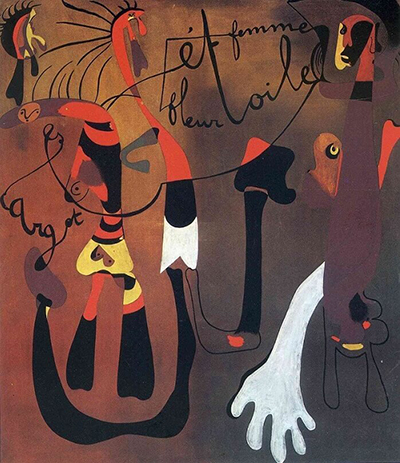This huge canvas is also sometimes known as The Hands Play a Big Part and was finished by Joan Miro in 1934. He put in large amounts of preparation prior to commencing this abstract composition.
It is the hand which immediately grabs your attention, because of the pure white used by the artist for it. It hangs down to touch the very bottom of the canvas. The visual language used in this painting is consistent with a number of his other works which allows us to get a good understanding of the meaning behind each object included by Miro. His background is typically vague and unassuming, in order to allow the foreground to avoid being diluted in impact. The main features are then completed in single tones of colour, providing a simple and clear boundary for each of them. Reds, blacks, yellows and browns are used to put together the other elements of the scene, meaning the white hand is particularly obvious.
Miro was an artist who wanted everyone to understand the meanings behind his paintings, unlike some other members of the Surrealist movement. He would append notes to some of his paintings in order to identify elements of each scene and sometimes also provide information within the artwork itself. In this case he titles the piece helpfully and also adds some freely written text. The simplicity of shape plus the colour scheme will remind many of classical african art and that region did inspire a number of modern artists who appreciated its alternative methods as compared to traditional European art. Others drew inspiration from Japanese art, particularly a number of the French impressionists and some other post-expressionists.
The artist would be playful with his paintings, despite putting so much planning in place prior to starting his more significant paintings. The seemingly random angles of each item and the ways in which they were laid out in relation to each other looks as if he had allowed his mind to dictate spontaneously, capturing the atmosphere of a dream or uncontrolled line of thought. This was entirely his intention, but the route to get there was well thought-out over a series of drawings which slowly went into greater detail each iteration.




